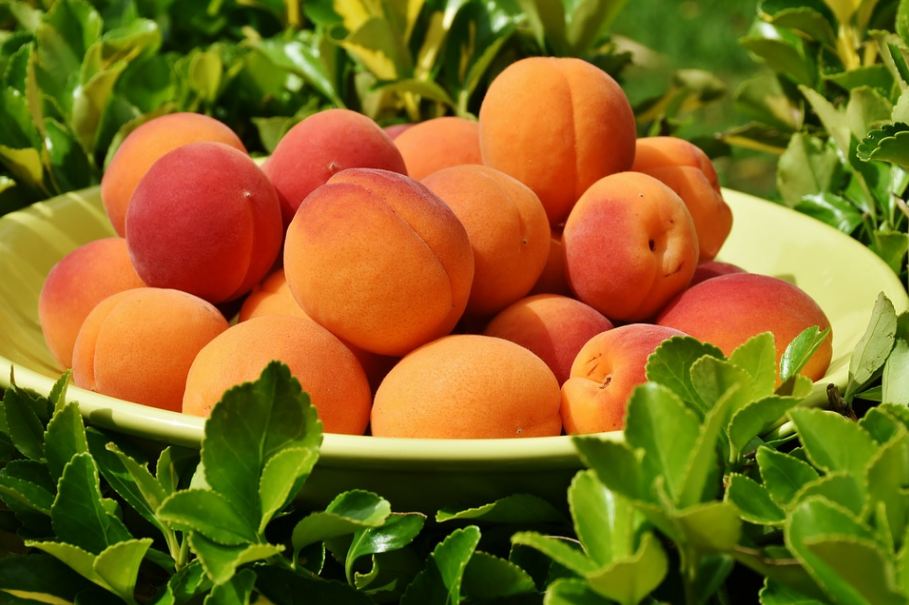APRICOT ORIGIN
Initially domesticated in China, apricots are now cultivated on every continent, excluding Antarctica. The fruit was first introduced in the New World in the early 18th century by Spanish missionaries in California, but evidence shows that apricots were already eaten in ancient Armenia.
FACTS ABOUT APRICOT
Statistics report shows that Turkey leads the export of dried apricots in 2019, with a total export value amounting to over 256 million U.S. dollars worldwide. Germany and the USA follow the lead. California is the top producer of apricots in theU.S., supplying about 95%.
Apricots are a member of the rose family and a relative of the peach. Unlike other fruits, refrigerating them does not guarantee to extend its shelf life and maintain its quality, but it impairs the ripening process of the fruit. It is better to let them ripen at room temperature before putting them on the fridge.
Apricots are an excellent source of vitamin A that contributes to healthy eyesight. It is free from saturated fat, sodium, or cholesterol, making it safe for consumption even with people in close monitoring of their cholesterol level.
Although enjoying its fruits will make you wait for the trees to bear fruits about 20-25 years. Apricot varieties suitable for drying are Moorpark, Trevatt, Story, Hunter, and Riverbrite. On the other hand, varieties Blenheim, Earlicot, Supergold, and Katy are perfect for fresh eating.
HOW TO GROW APRICOTS
Acidic soil is not suitable for apricots. Check if you have a higher pH soil, and having an acidic soil can be improved through the application of 60g lime per square meter. Apply it in late autumn or winter each year, or you can dig in mushroom compost or poultry manure. Layer rubble at the bottom of the planting hole if the soil is heavy.
Plan to choose which varieties will suit your needs and wants.
BEST CLIMATE AND SITE FOR GROWING APRICOTS
Cold enough winter temperature is best for apricots as it provides a period of dormancy. Typically, 600 to 900 chill hours (32 to 45°F) are needed each year, just a fewer chill hour than a peach, but they won’t survive temperatures below 0°. Apricots are the first fruit trees to bloom in early spring, but it is precarious to plant apricots in late spring. Frost will kill flower buds and blossoms.
In regions with a late springtime, plant apricots on the north side of a building, so they remain dormant longer and bloom later.
Consequently, they will not withstand summer heat, significantly above 100°F. In cold summer regions, growing apricots are challenging but possible by fan training them against a south or southwest fence or wall or growing them in containers or a greenhouse or sunroom.
Growing apricots in full-sun will help give an excellent yield.
FEEDING AND WATERING
Water is a must! Apricot plants should be watered deeply and regularly to help promote a burst of new growth before the weather cools. Apply a mulch of compost in spring to conserve water.
For better growth, feed the trees with poultry manure or fertilizer of your choice, after pruning but keep it away from the trunk. Poultry manure has a high pH level that helps meet apricots’ preference for neutral to alkaline soil.
Apply them again in spring. Using compost as mulch should provide suitable nutrition. When the leaves of the trees become pale, supplement with a pelleted slow-release organic fertilizer.
PRUNING
Like any other fruit tree, apricots need pruning, but they are more vulnerable to bacterial canker and other diseases that can pass through pruning wounds or scratches.
It is safer to prune in late winter to early spring or sometime after harvesting (commonly in February), as wounds heal quickly as possible. New growth is to be pruned by a third. Remove long vertical branches and unproductive spurs.
Pruning stimulates the growth of new wood with retaining fruit-producing ripe wood. If you prune apricots in February, sufficient new growth will come out during autumn and hardened off over winter. This will ensure the following season’s crop, while disease attacks will be minimized.
Apricots bear fruit on spurs, the ripened wood bears for up to four years. Production will suffer in the plant’s later years if there is no proper and regular pruning because new wood is not forced into growth.
EATING FRESH APRICOTS WITH SPICES
Warm spices are the best spices to complement apricots. These include cinnamon, which can be used in both sweet and savory applications. You can try to put apricots to cinnamon rolls and add a pinch of cinnamon to your cobbler or poach apricots with a cinnamon stick.
Ginger is another complementary spice to apricots, as its warmth bridges the tart and the sweet taste. You can try this combination in apricot-ginger scones, in a cooked spiced puree similar to applesauce or accompanying a roast pork tenderloin.
Highly aromatic cardamom is also an excellent partner with apricots. Poach apricots with cardamom and vanilla to appreciate this spice’s character.

